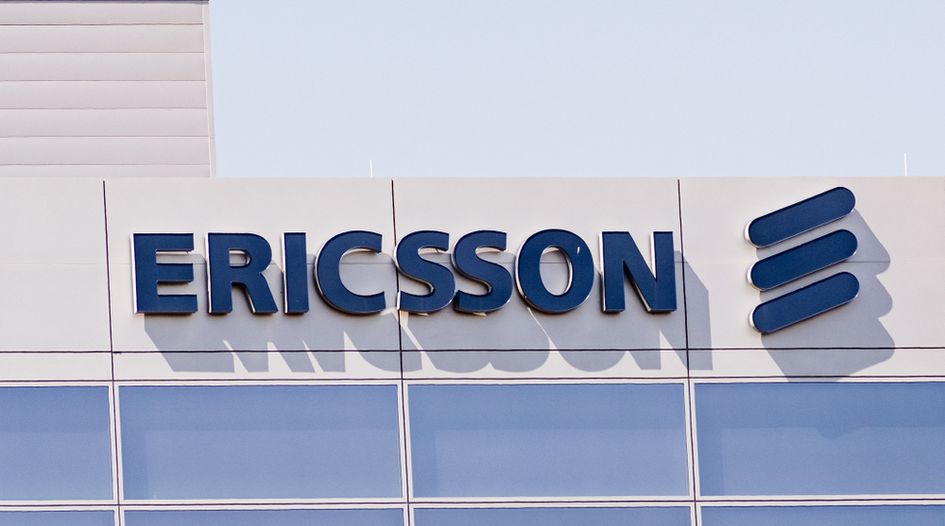Ericsson wins largest-ever Indian patent litigation damages award in SEP dispute against Lava

After extensive pleadings, expert testimonies and arguments in an SEP dispute between Ericsson and Lava International – the third largest Indian smartphone brand, with 6% of the total market share when the dispute began in 2015 – the Delhi High Court ruled in favour of Ericsson on 3 April 2024 and ordered Lava to pay 2.44 billion rupees in damages (US$29 million).
Case background
After protracted negotiations, Ericsson and Lava had failed to agree on licensing terms and rates. Lava filed a suit against Ericsson to prevent it from enforcing its SEPs. In 2015 Ericsson filed a suit against Lava, alleging infringement of eight SEPs covering technologies such as the adaptive multi-rate speech codec, enhanced data rates for GSM evolution and 3G features. In its defence, Lava countered by challenging the patents’ validity.
Significance of the decision
Essentiality
Relying on pleadings and correspondence between the parties, the court concluded that Lava had admitted that Ericsson’s patents were essential. Ericsson also successfully established essentiality through its submission of claim charts.
Doctrine of exhaustion
Lava utilised the doctrine-of-exhaustion defence under Section 107A(b) of the Patents Act to argue that since it imported the mobile phone handsets to India from licensed entities, it could not be held liable for infringement. Ericsson countered by arguing that Lava had failed to show that it had imported the handsets from entities that held licences from Ericsson.
The court agreed. It stated that, based on precedent, a doctrine-of-exhaustion defence could only be successful if convincing evidence could establish that the defendant had obtained the product without derogation of a patentee’s rights under Section 48 of the Patents Act, which Lava was unable to do.
Two-step infringement test
The court relied on the Rules Governing Patent Suits 2022 and the division bench’s judgment in Intex v Ericsson to conclude that in SEP cases, infringement can be established if the suit patents map onto a standard (the first step) and the implementer’s device is compliant with the standard (the second step) (2023:DHC:2243-DB). On perusal of evidence submitted by both parties, the court found that Lava had infringed Ericsson’s patents.
Party conduct during FRAND negotiations
The court analysed the correspondence between Lava and Ericsson, which took place prior to the initiation of the lawsuits. It concluded that Ericsson had engaged with Lava in good faith to negotiate licensing rates but determined that Lava had no intention of entering into a FRAND licensing agreement and was an unwilling licensee.
Basis of damages
The court ruled in favour of using the entire SEP portfolio to calculate damages – not just the asserted patents. This approach is arguably stronger as SEPs are critical to achieve interoperability, and transaction costs and legal complexities are minimised.
Ericsson was successful in convincing the court that the disputed patented technology was central to the primary function of the mobile devices and that damages should be calculated based on the end product using the chipset – not the smallest saleable patent practicing unit (SSPPU), which was Lava’s position. The court reasoned that the SSPPU-based approach would undervalue the patents’ contribution to the overall value of the device and would be inconsistent with telecom industry practice, in which royalties are calculated based on the end product.
Calculation of damages
Using the comparable licences approach, the court held that the rates previously offered by Ericsson were almost identical to those that it had offered other entities. The court thus found these rates to be FRAND. Extrapolating the validity of the suit patents to Ericsson’s portfolio (seven out of the eight SEPs were found to be valid) the court estimated that 87.5% of the patents in the portfolio were likely to be valid. The final royalty rate was calculated at 1.05% of the selling price of different devices that had infringed the patented technologies. The overall damages were approximately 2.4 billion rupees (US$29 million) – the largest ever in Indian patent litigation.
Litigation costs
The court ruled that Ericsson would also be entitled to the actual costs of the litigation.
The single-judge ruling clarified various issues related to SEP litigation and highlighted the importance of meaningful FRAND discussions.
However, Lava appealed. Listed before a two-judge appellate division bench at the same court, this appeal was heard for the first time on 13 May 2024. Lava failed to obtain a stay on the 3 April order. It has also been reported that while Lava may not need to pay the entire damages amount before the appeal is adjudicated upon, it has agreed to make an interim deposit to safeguard Ericsson’s rights. To negotiate the deposit amount, the court has set up a confidentiality club comprising select lawyers from both sides.
This is an Insight article, written by a selected partner as part of IAM's co-published content. Read more on Insight
Copyright © Law Business ResearchCompany Number: 03281866 VAT: GB 160 7529 10